The number of cars being used on UK roads grew to record levels in 2024, up 1.3% or 470,556 units to 36,165,401.
It was the third consecutive year of growth and the second-biggest volume gain since 2016, according to new Motorparc data published today by the Society of Motor Manufacturers and Traders (SMMT).
The increase reflects growth in the new car market, which in 2024 saw 1.953 million new cars registered, with battery electric vehicles (BEVs) making up 19.6% of the market.
Van use also grew to record levels, up 1.8% to 5,102,180 units, with more than one million light commercial vehicles (LCVs) added to roads since 2015.
Heavy goods vehicle (HGV) volumes, meanwhile, remained almost unchanged, down 0.1% or 364 units, at 625,509 units, and bus and coach volumes fell by 0.1% to 71,718 units.
Overall, it means that there are 41,964,268 vehicles on UK roads, a year-on-year increase of 1.4% and it highest ever level.
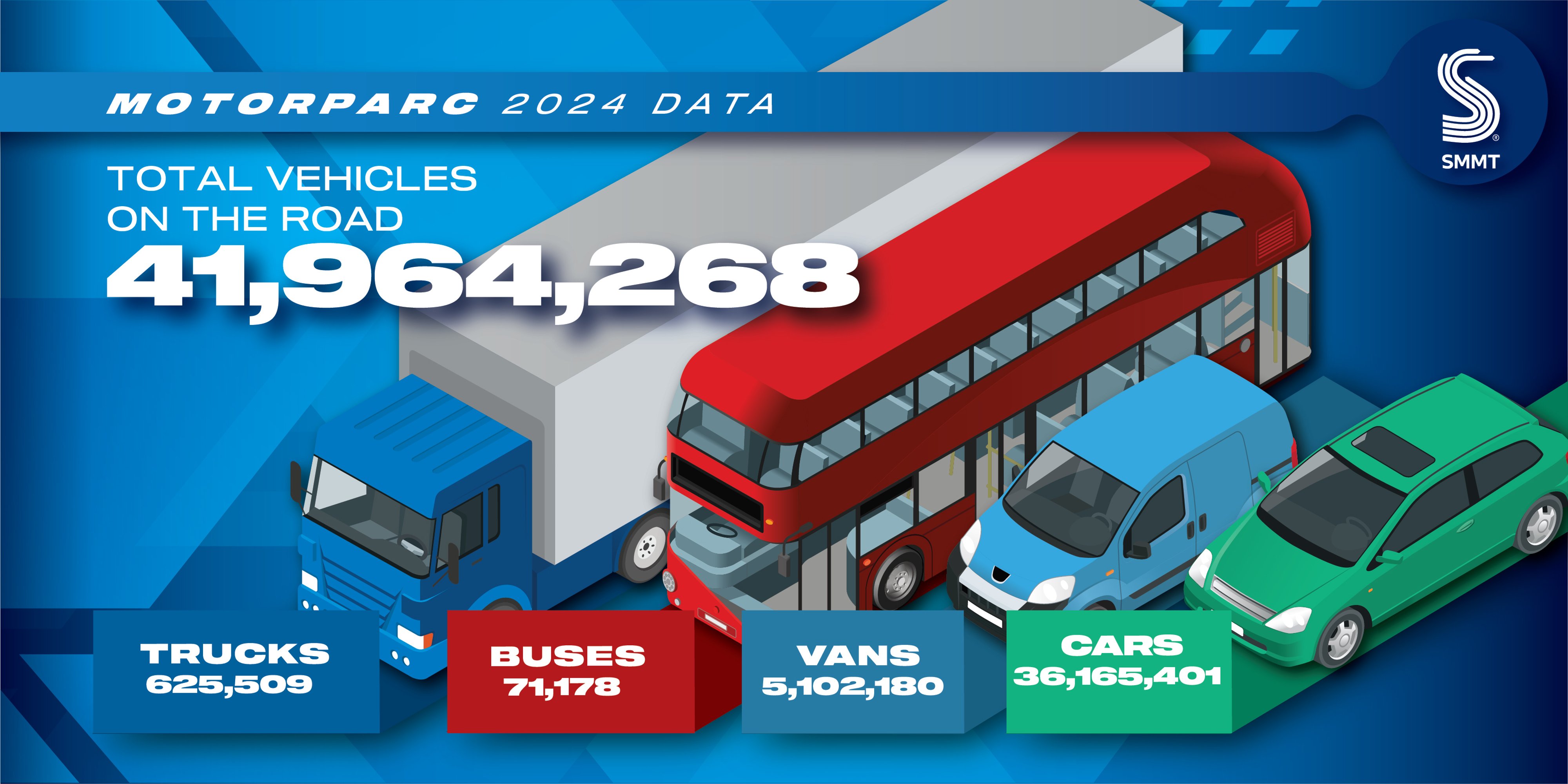
Popular powertrains
There has been a 34.6% increase in plug-in vehicles, including battery electric vehicles (BEVs) and plug-in hybrids (PHEVs) – now accounting for one in 20 (5.1%), or 2,157,360, vehicles in use.
Fully electric cars have been the fastest growing sector of the parc, breaking the million-vehicle milestone as volumes soared by 38.9% to 1,334,246 units.
It means that BEVs comprise 3.7% of cars in use, up a full percentage point on 2023.
Conventionally fuelled cars remained the most dominant powertrains, with petrol-powered motors rising by 1% to 21 million, and an almost unchanged market share of 58.2%, while diesel volumes fell 4.4% to 11.6 million – making up 32.1% of cars in use – and marking the fuel type’s fifth straight year of decline.
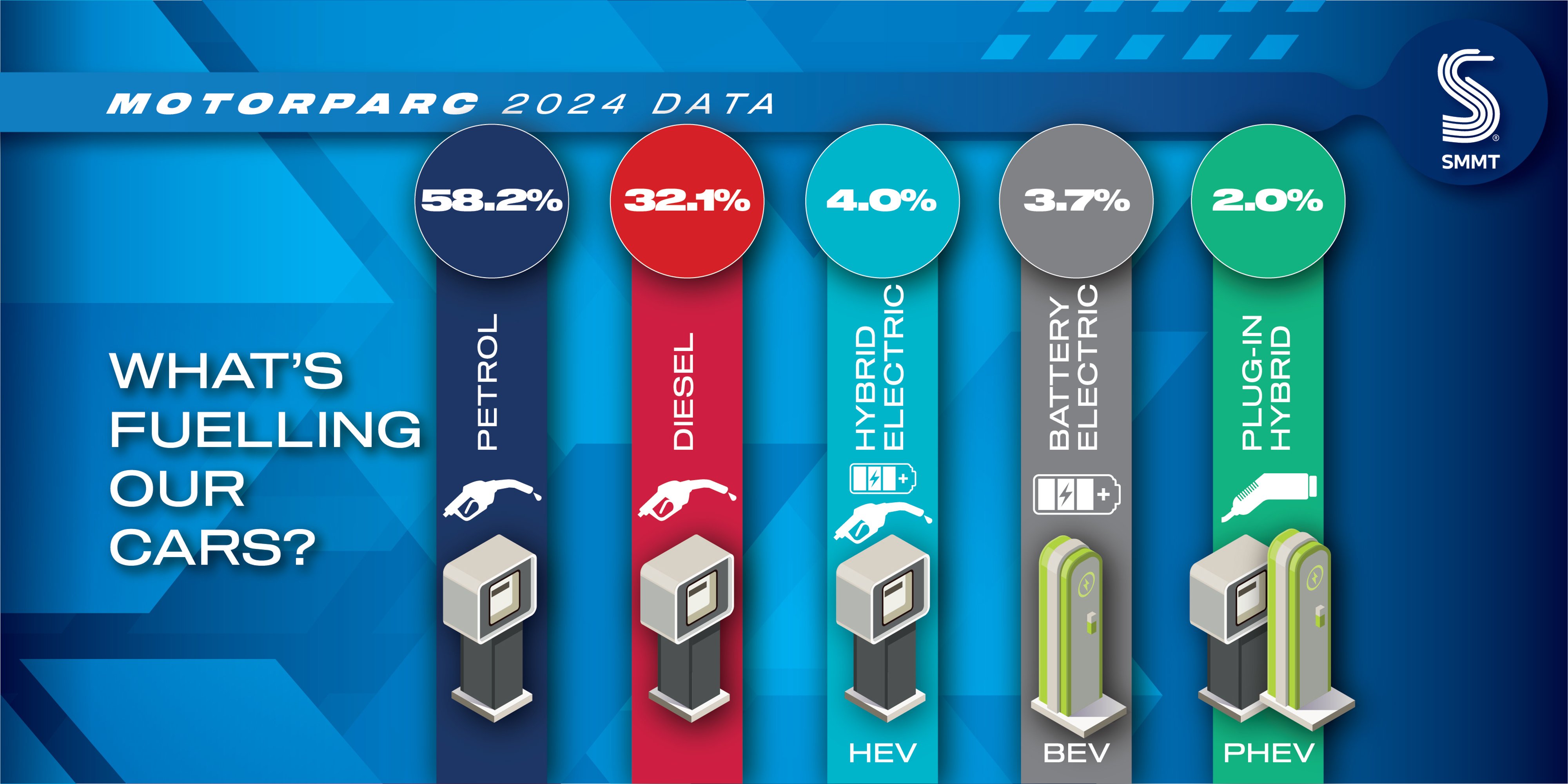
The increasing adoption of newer lower and zero-emission technologies across the parc led to a reduction in average car CO2, which dropped by 1.6%.
This was fuelled by a significant fall in company car emissions, down 5.6% thanks to fleet incentives, such as low benefit-in-kind (BIK) tax.
Private car CO2 also dipped, falling marginally by 1%.
Lower uptake in the new car market means motorists are holding onto their cars for longer, with the average age of a car on the road now 9.5 years old, up from 9.3 years in 2023 and much older than the eight-year-old average of 2019.
More than two-fifths (43.4%) of the total parc has now been in use for more than a decade, predating the introduction of lower-emission Euro 6 technology which has done much to improve air quality.
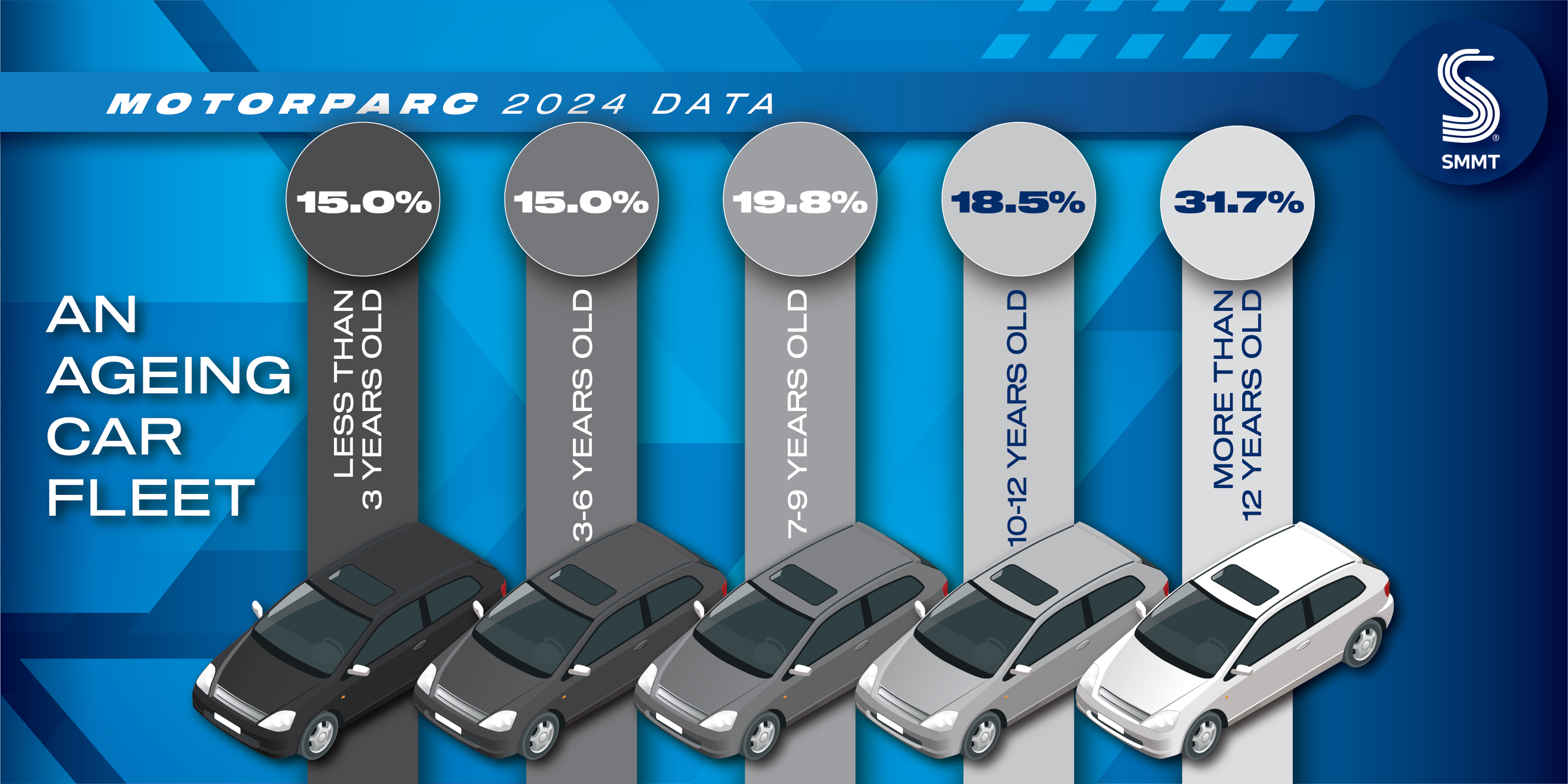
The commercial vehicle parc is also decarbonising, with buses leading the way with an 81.8% increase in zero emission units on last year to 3,494 – accounting for almost one in 20 (4.9%) buses in use.
Vans are also increasingly going zero-emission, with battery electric van volumes increasing by 31.6% to 80,476 units – or 1.6% of the parc.
Electric truck use also rose, but overall they account for fewer than 0.1% of the fleet.
Mike Hawes, SMMT chief executive, says that, while the vehicle parc is growing and reducing its environmental impact, there is scope to push environmental improvements much faster with motorists are holding onto their cars for longer – one and half years longer on average, than only five years ago.
“Drivers need more incentives and greater confidence in infrastructure investment if we are to replace the high volumes of older high-emission cars with zero-emission alternatives,” he added.
“Success will keep the country on the move while driving up economic growth from every business dependent on road transport.”
Superminis remain the most popular car type in use, closely followed by lower medium models.
These segments account for almost three out of five cars (59.2%) on the road, making up 11,893,199 and 9,524,299 units respectively.
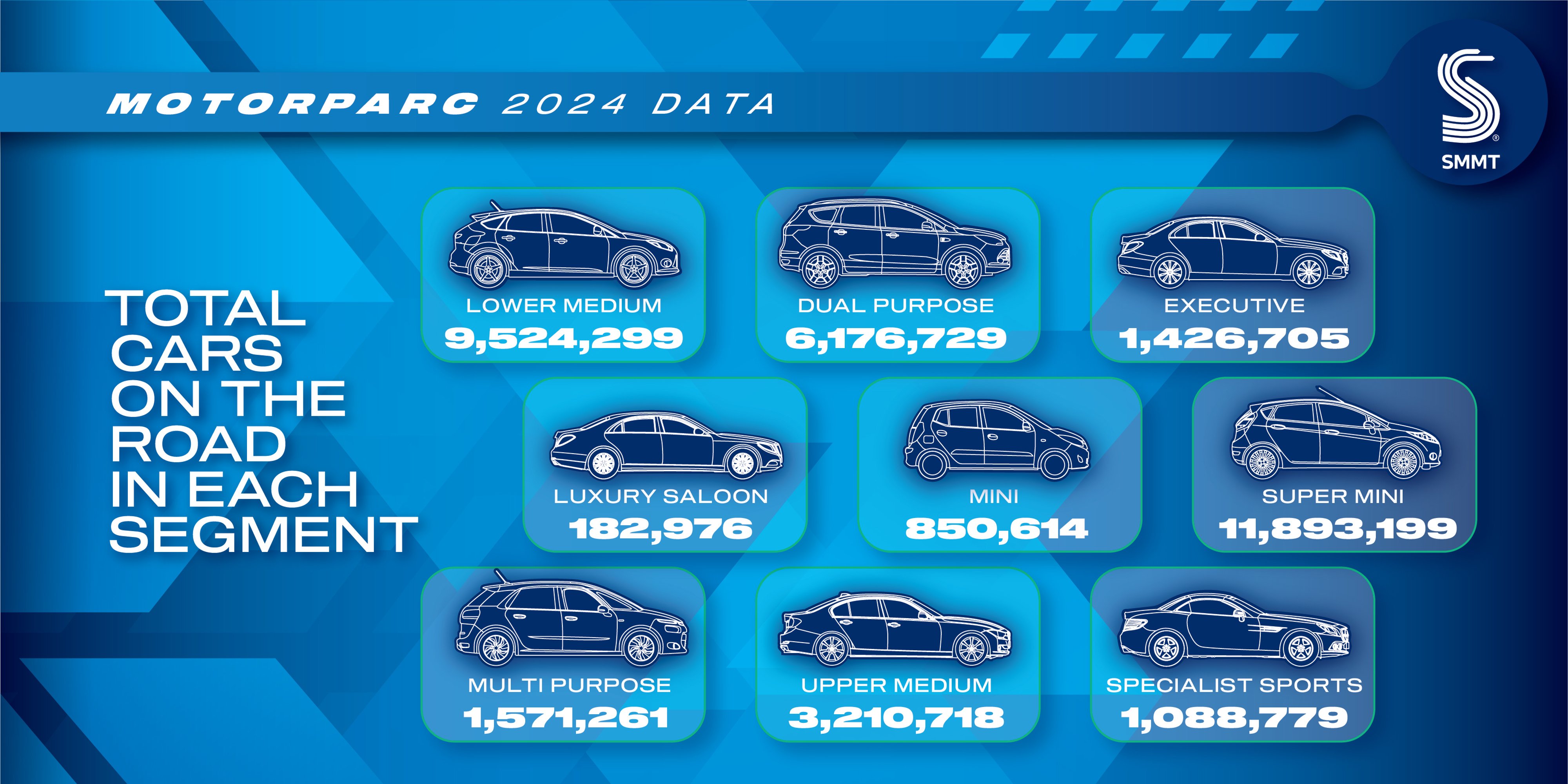
Germany was the largest source of cars on UK roads, accounting for 29.5%, with the UK (14.1%) the second and Spain (10.3%) the third. China is now the 12th largest source of cars.
In terms of colour, black remains the most popular car colour of choice, accounting for more than one in five vehicles in use today (20.2%), while white coloured vans remained the most popular at 2,745,635 units
Automatic transmissions continue to rise as more electric vehicles reach the road, up 9.5%, while manual transmissions have fallen 2.6%.
London and the South East are home to the most cars (8,993,282), followed by the North West (4,007,590) and the South West (3,609,861).
London and the South East is the region with the most registered EVs in use (456,289).
Furthermore, almost six-in-10 EVs are registered to companies, compared with companies accounting for just 10% of the overall car parc.
Finally, the five most popular cars on UK roads in 2024 accounted for over 5,220,195 million in use – these are the Ford Fiesta at 1,465,402, Vauxhall Corsa at 1,035,440, Ford Focus at 1,004,153, Volkswagen Golf at 997,788 and Volkswagen Polo at 997,788.
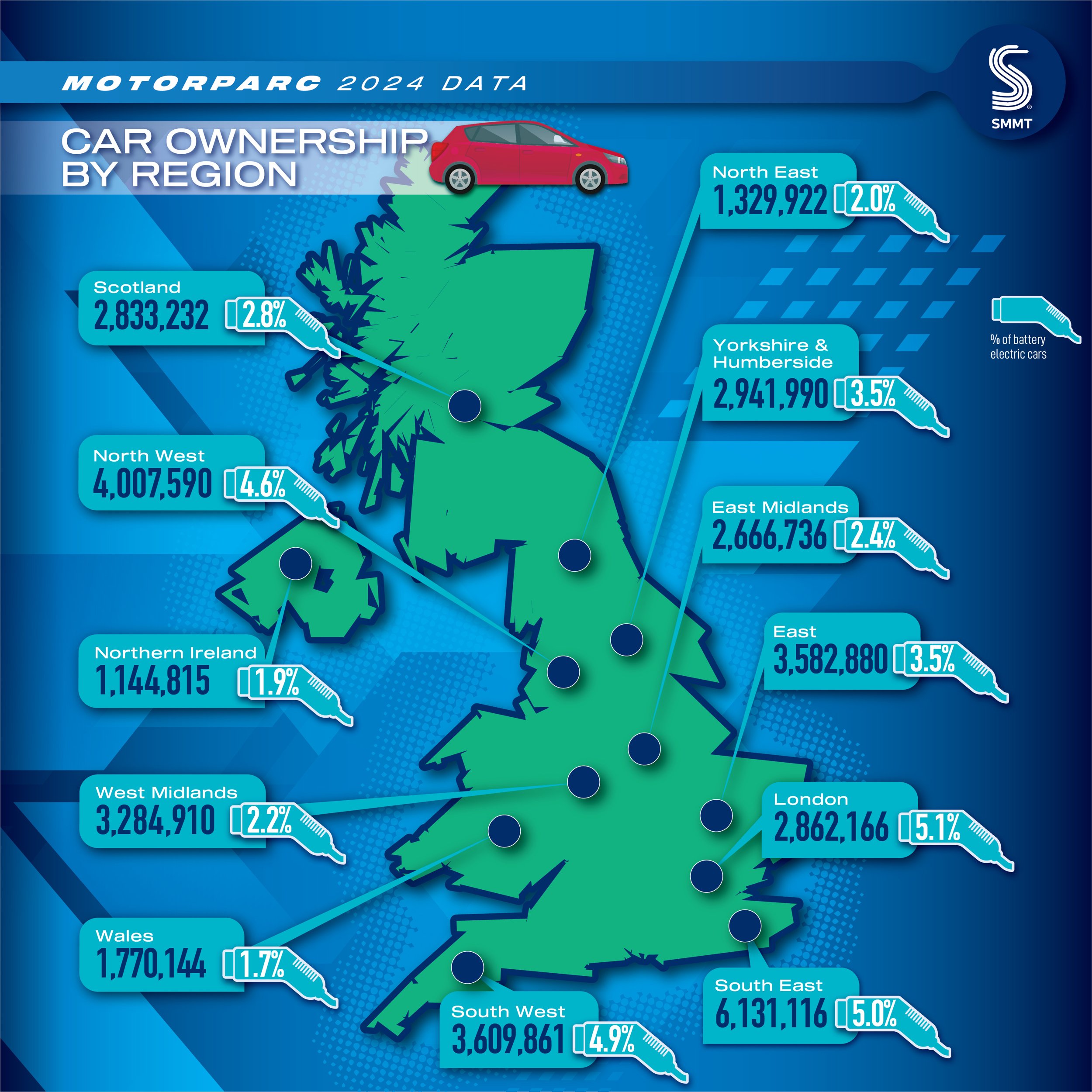












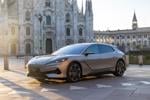








Login to comment
Comments
No comments have been made yet.